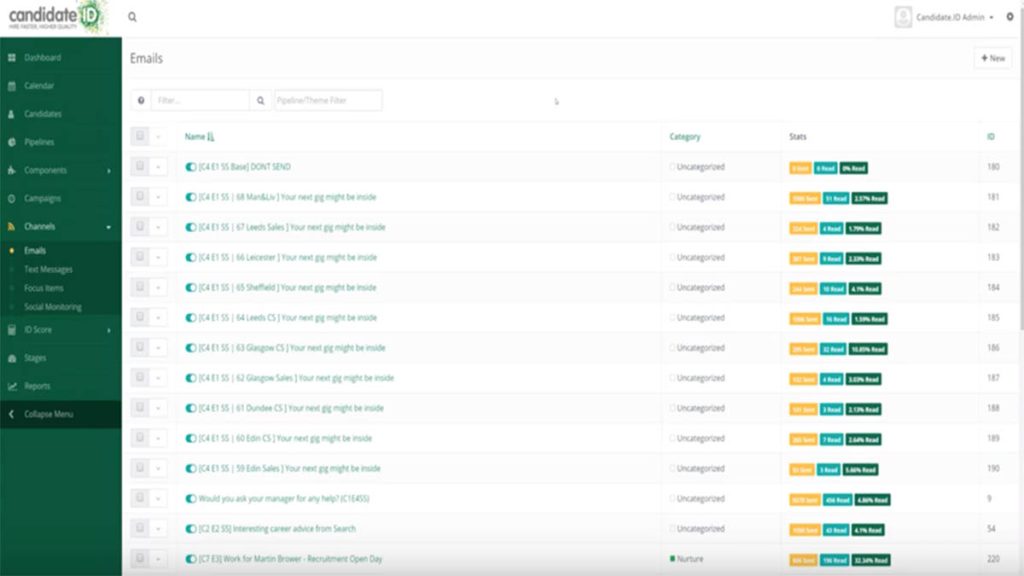Talent mapping is a very important skill within the realm of modern recruitment. It is the process where a company analyzes their current and future talent needs, and then maps out pools of candidate talent to meet those needs. This is not an easy task, and many times it cannot be solved without proper automation. Here are several tools that could help you with the talent mapping process.
Why this is important
There is a talent gap within many industries, especially high-tech. By 2020, there will be 1.4 million computer specialist job openings in the USA, according to the U.S. Department of Labor. Projections show universities are not likely to produce enough qualified graduates to fill even about 30% of these jobs. The competition for talent is enormous, which means that businesses have no room for mistakes. Your hires need to be super targeted, with a high success rate. If a hired candidate turns out not to be a fit or lacks the essential skills, it will slow down important projects. Also, the company will have them go and start searching for new candidates all over again. All this leads to wasted time and resources.
Talent mapping helps to avoid such situations by accurately assessing the company’s workforce needs. The goal is to build a pool of candidates with the desired skill sets so that the company’s overall hiring numbers improve. Another case for talent mapping is when a company expands business to a new city. In this case, the company might want to understand how long it might take to hire X number of candidates and what associated costs will be. Here are three tools that can be used to solve all these tasks.
PredictiveIndex: mapping your database for talent
You may have a database full of perfect candidates, but you still don’t know if they will be a good fit for a particular role. Talent mapping can be used identify positions that are a potential fit for your existing candidates. Behavioral and cognitive indicators can also be used to measure a candidate’s fit for a role.
The PredictiveIndex solution can be used for proactive identification of new roles that the organization needs to drive its business strategy. It can help match open positions to the current candidate pool, and understand the candidates’ behavioral and cognitive requirements for a new role.

With this tool, the hiring manager can set the behavioral and cognitive requirements for any role, send pre-employment assessments, and generate interview questions that highlight cognitive matches. Also, the PI data can be used to on-board selected candidates according to their behavioral preferences.
AmazingHiring: local candidates market research
One of the most laborious tasks for staffing professionals is to source a pool of candidates that meet specific requirements. First, you need to identify people that can fill the role in a particular city. Also, it is great to be able to sort candidates based on some criteria, including seniority level, experience and education. For companies that prefer nurturing young talent, information about universities and new grads can be crucial.
AmazingHiring is a perfect tool for solving this task. First, you can map developer talent by using aggregated information from 50 sources in each location by skills, seniority or education level. This gives you an overview of the candidate landscape. Second, consolidated candidate profiles give you full information about the prospect’s background. Find your current employees in AmazingHiring and map them or find relevant patterns based on your open roles.

In the results, the recruiter can assess not only the skills listed on LinkedIn, but also get information about real projects the person participated in. For programmers, AmazingHiring can find their accounts on StackOverflow or other coding websites. On such sites, candidates often list samples of their code, links to open source projects, etc.
AmazingHiring can easily sort pools of candidates so that recruiters can target by seniority level, skills, languages, location, etc. Such information is crucial for building a talent list that corresponds to the company’s real hiring needs. Also, the solution helps enrich the specific candidate’s profile with contact information, which improves overall hiring communications.
Candidate.ID: visualize research data
This solution is a good fit for mapping hiring needs with an already collected candidate pool and helps evaluate the impact of specific hiring activities.

Candidate.ID is useful for advanced candidate segmentation, building hiring workflows for different roles, and trigger activities based on real-time actions. This helps focus efforts on engaged and ready-to-hire candidates, instead of cold candidates who are not really interested.
This solution also works with referrals by pushing them directly into a talent pipeline and assesses the effectiveness of referral programs and email campaigns.
What are some of the other talent mapping tools that you know? Share your favorites in the comments below! In a few days, SourceCon will publish another take on talent mapping. Stay tuned!
